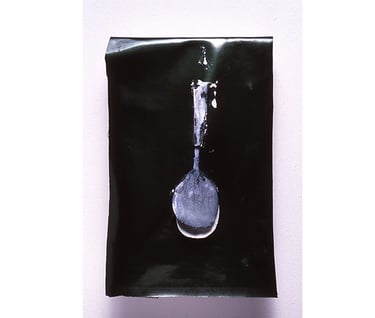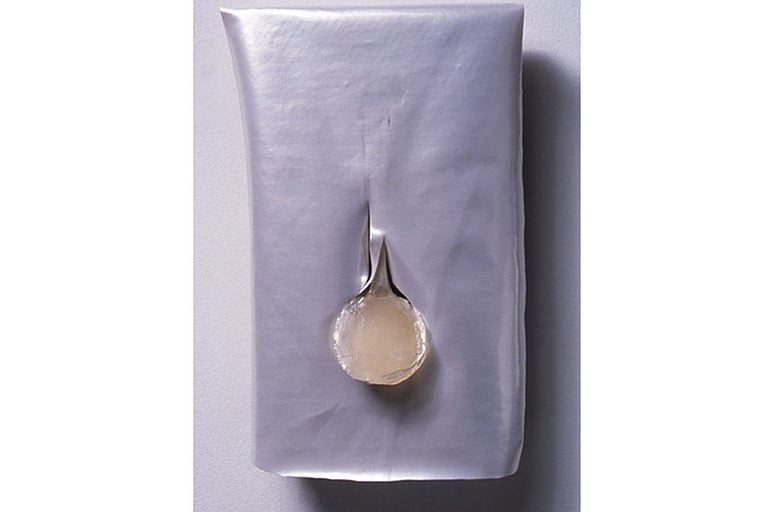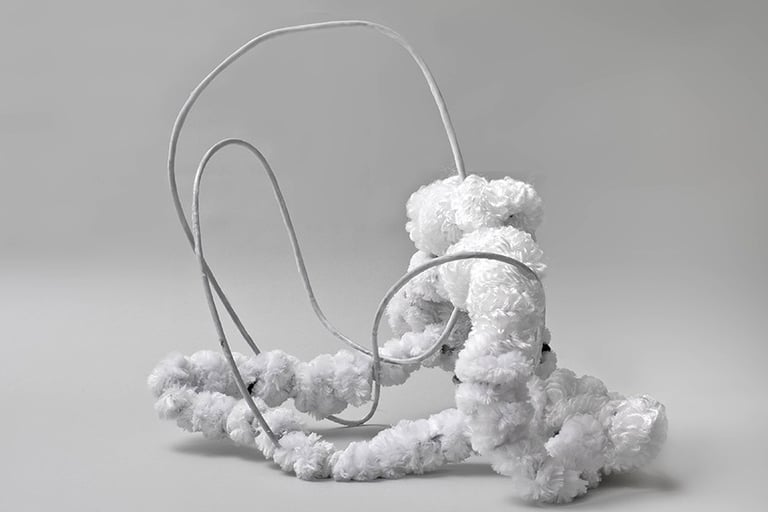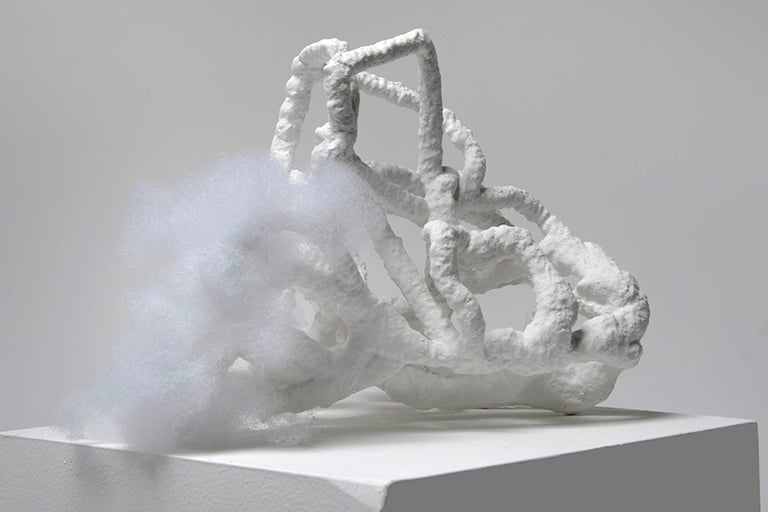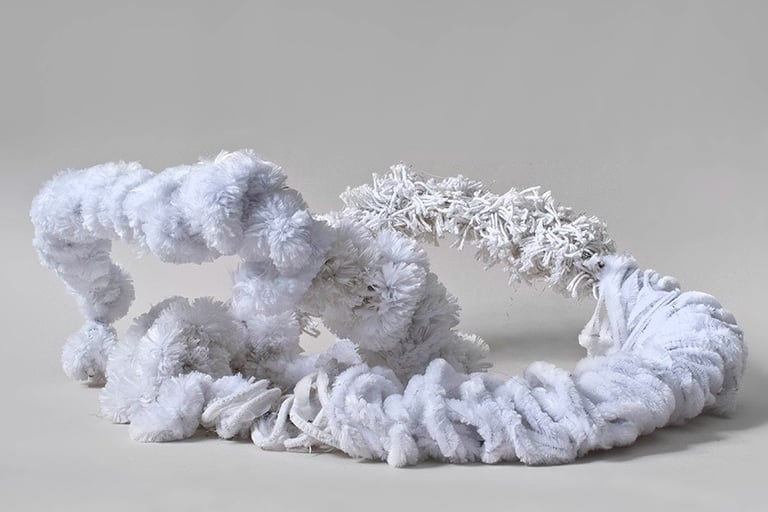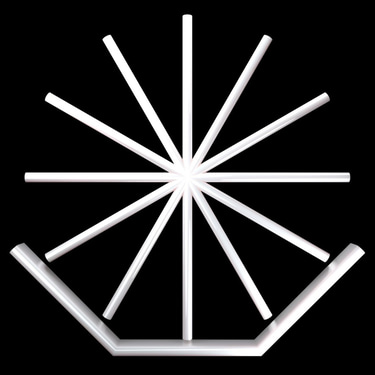Nicholette Kominos's Hyperawareness
Sophia Arriola
3/16/2015
Nicholette Kominos creates abstract structures cognizant of the familiar. With form evoking fluidity, her sculptures and paintings explore a diverse range of mediums, from pipe cleaners to vellum and steel. There is a psychological depth to her work, in which its simplicity encourages response and interpretation. Whether inspired by “the curve of the spoon” or “the grid of a potholder,” Kominos’ work is elegantly subtle and organically construed. Here, Kominos lays it all out.
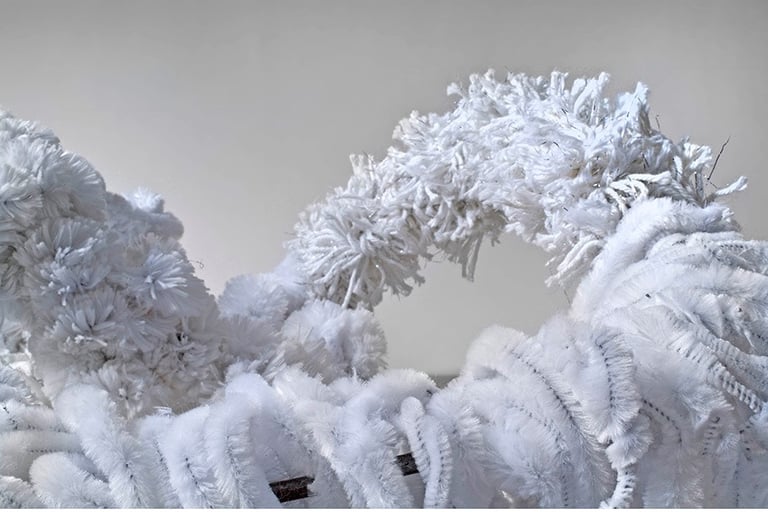

Why do you create?
My decision to study and make art was initially compelled by an intuitive drive, and then throughout the years, art making has given me another way to communicate and express ideas through a physical and nonlinear structure. And at times when I’m in the studio working and very focused, the extraneous mind chatter disappears and a feeling of integration occurs. I then become hyper aware of the beauty of color, light, the world in general, it is an awesome state and a good way of accessing that feeling of integration and joy of being in the world.
How do you describe your work?
From a young age I used my understanding of psychology and its methods as an organizational template in which to find and see patterns in a very fluid world, not only in archaic relationships, but also as a way to extrapolate and find similar patterns in the culture at large. Thus this process of self-examination and searching for ways to detangle information influences my work.
My constructions are based on compositional subtleties and forms that are abstracted from familiar objects. Inspiration comes from such things as the curve of a spoon, the grid of a potholder, or the biomorphic shape of a cupcake. The allure could be from its innate characteristic, function, or history, as well as the layers of information emerging from the context of its familiarity.
A variety of techniques are used from the modest cutting and wrinkling, to painting, and bronze casting, along with a range of materials, in order to create texture and pattern and emphasize oppositional forces that are co-existing.
The work is simple in order to create room for interpretation and small details reveal their significance as focus shifts back and forth between positive and negative space.

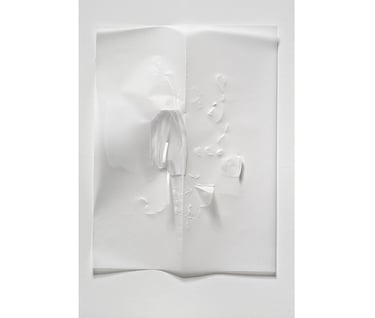
Could you give us some insight into your creative process? How do you start? How do you know when to stop?
When I begin a new series it usually takes some time to dismantle my inner critic, and I must force myself to stay in my studio and sometimes it is enough to make a few marks on paper. Eventually, I’ll exhaust my negative side and find the rhythm. I work best late at night, my peak hours being around midnight to two am. I am not always able to manage that with family and work obligations, but when it happens it is always fun. I’ve learned to trust my physical rather than mental response to determine if the work is right, when to pause, and when to stop.
What sort of themes do you like to explore?
Themes that I like to explore have to do with subtle gestures that can be indicative of larger concerns. My compositions are sparse so that so that simple marks, commonplace objects, dichotomies, and divisions can be highlighted, to examine cultural and psychological associations.
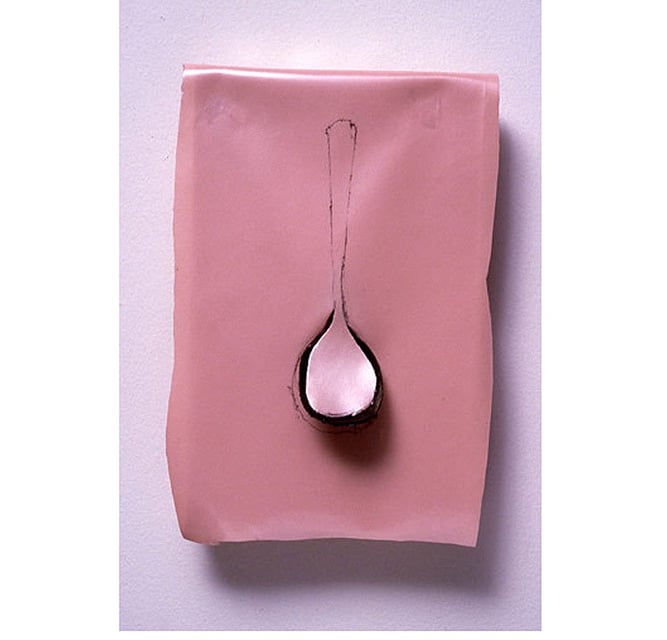

Could you tell us more about your pipe cleaner series, what inspired this project?
Funnily enough, when I was a kid I hated glittery things. But when I began teaching art to children and doing family art workshops I loved seeing what people were making with craft materials such as pipe cleaners, glitter, fuzzy puffballs, and beads, the work was both heart-felt and effervescent. When I decided to work in a three dimensional format, the flexibility and gestural quickness of the pipe cleaner was appealing along with its association to domesticity and a populist sensibility, plus, the contrast of the soft glittery craft material, gooey industrial rubber, with the strength/inflexibility of the steel or bronze bases was of interest.
How do you want people to interpret your work?
Overall, I‘d like people to notice the psychological content of my work and question the intention behind my use of diverse, contrasting materials, and the balance of my compositions. Also, my constructions have an innate awkward quality that I find humorous and hope that others will too.
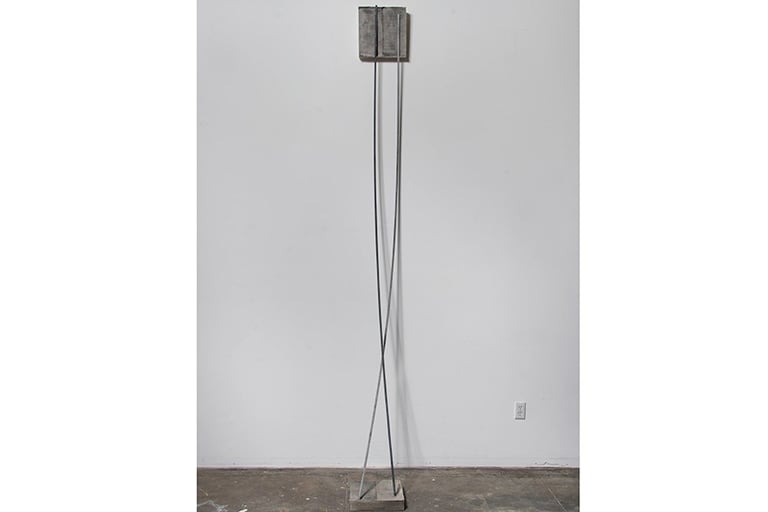

Do you have any future projects or shows in the works?
Yes! I’m very pleased to be included along side some of my favorite artists in two group shows, one opens in February and the other in March:
“Sampled” curated by Anita Bunn at Offramp Gallery in Pasadena, CA
February 22 – March 29, 2015.
“Ties to Modernism: Michael Todd, Kristan Marvell, and Nicholette Kominos” South Bay Contemporary/Zask Gallery, San Pedro, CA
March 5-April 12, 2015

